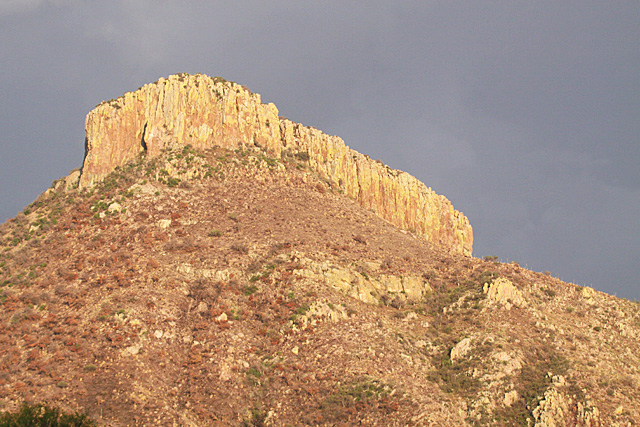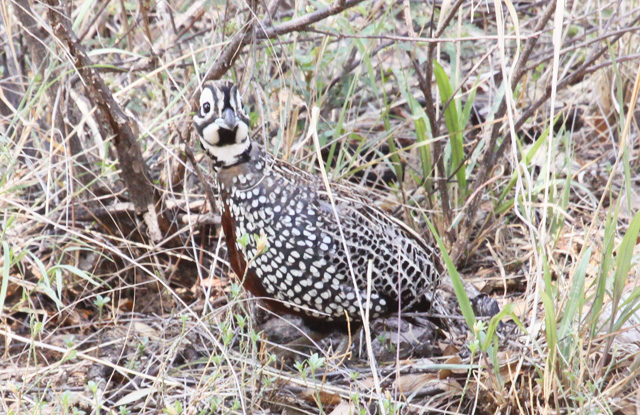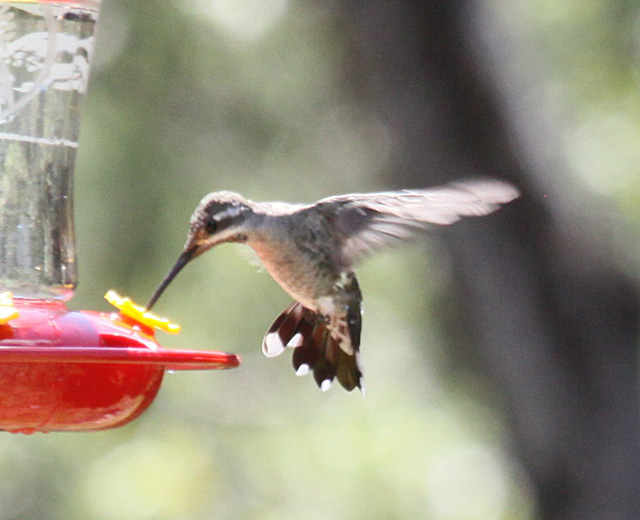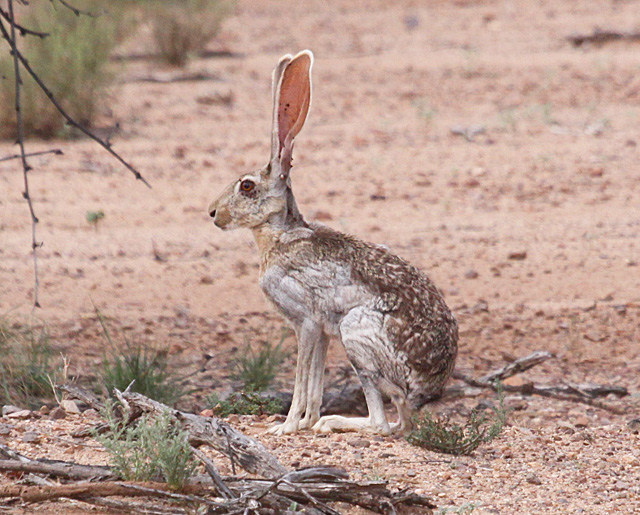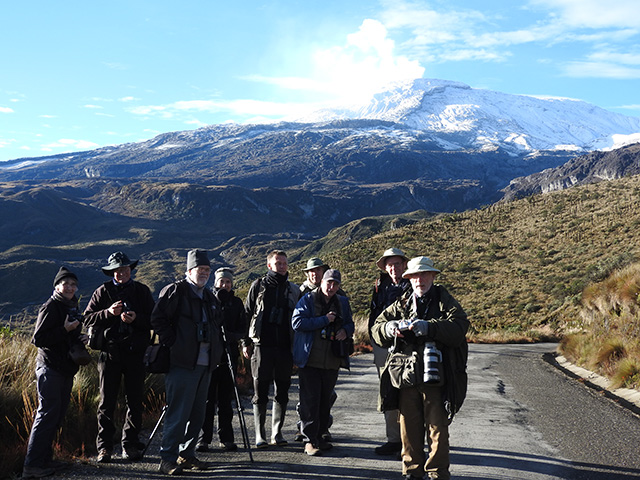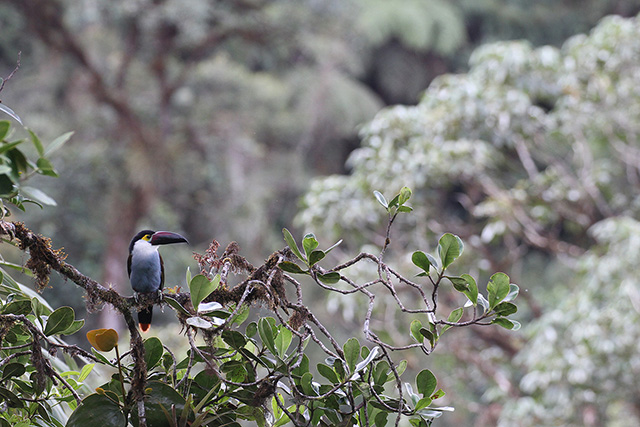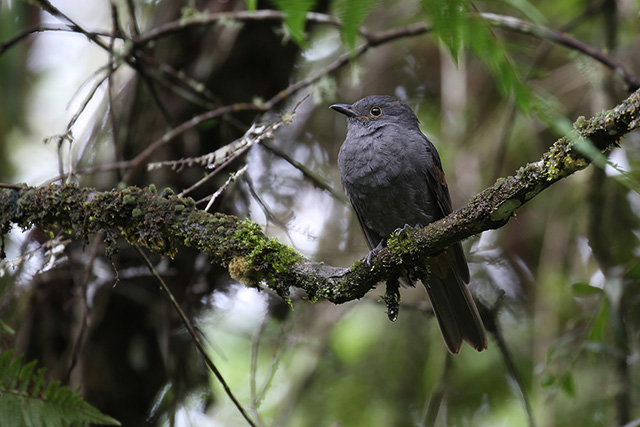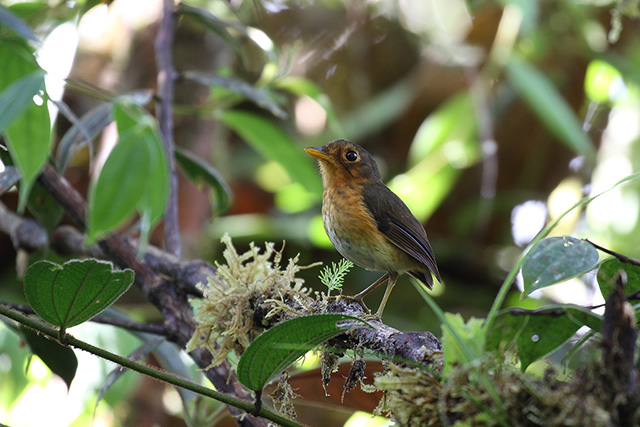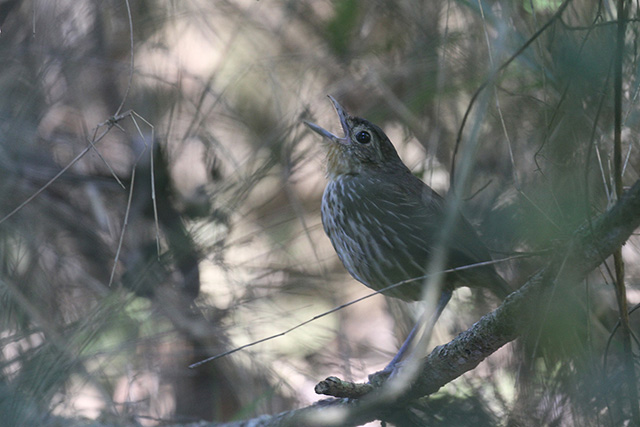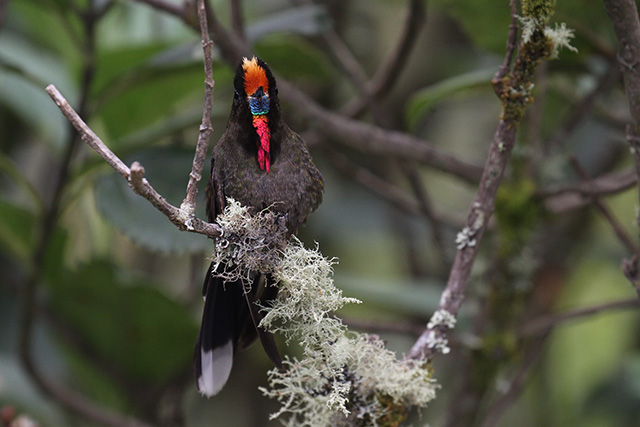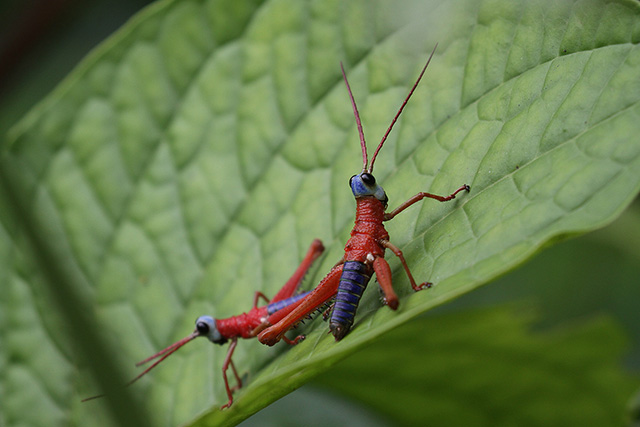From the Field
October 29:
Jake Mohlmann on his just-completed tour Argentina: The North - High Andes, the Chaco and Iguazu Falls
We just completed the 2016 northern Argentina tour tallying 409 species of birds and 16 species of mammals. Somehow the weather ended up being perfect throughout with cool nights for sleeping, and mild days for birding. Our expert drivers and local guides knew this route well and the abundance of wildlife encountered shows just that.

The group at Calilegua
In the Northwest part of the country we drove 2,188 km through several distinct ecological regions including the Yungas cloud forests, pre-Puna, Altiplano, and dry Chaco Woodland.

A brief hike before our picnic lunch on the Bishop's Slope
The Yungas harbored a quick trio of lifers we’ll never forget. Just before sunset we discovered a Rufous-throated Dipper, Torrent Ducks, and Red-faced Guan all utilizing the same stretch of river giving us all ample opportunities for extensive picture taking.

Rufous-throated Dipper surveying for supper.
Altiplano birding in Argentina is very rewarding with great looks at many different birds rarely encountered. At Pozuelos we walked right up to the water’s edge to view Andean, Chilean, and James’ Flamingoes as well as Puna Plovers, Andean Negritos, and Giant Coots.

A Puna Plover shoots by at close range,
In Yavi we finished our ground dove sweep after getting great views of Golden-spotted, Black-winged, Bare-faced, and the endemic Bare-eyed. A male Wedge-tailed Hillstar stood alone above town, where this species' range barely enters the country, and a huge flock of Citron-headed Yellowfinches fed in a barren pasture.

A Bare-eyed Ground Dove near nest.
Ending the tour with three days at Iguazu National Park was a welcome change from the driving. We had lengthy strolls around rainforest paths, walkways on the edge of the falls, and many lifebirds for all. A pair of Robust Woodpeckers escorted us down the Obera Road beyond Black-throated and Surucua Trogons, singing Spot-backed Antshrikes, and displaying Swallow-tailed Manakin. Black-fronted Piping Guan showed well near the famed falls and we eventually ran into a range-restricted Creamy-bellied Gnatcatcher. Seeing breeding Great Dusky Swifts plummet into the raging waterfalls to tend to their needy young is one of the highlights of this remarkable tour.

Great Dusky Swifts nest behind the roaring Iguazu Falls.

Iguazu Falls raging full volume.
October 26:
Susan Myers on her recently-completed tour, Borneo
I’ve just returned from another fabulous tour in Sabah, on the island of Borneo. As always, our birding and general naturalizing was thoroughly enjoyable, successful and full of adventure! We started on the Tambunan Pass, our only mid montane site on the tour. First some dapper Bornean Bulbuls showed up, apparently attending a nest, followed by great views of two endemic barbets – Mountain and Bornean, with a fabulous finale in the form of the elusive Whitehead’s Spiderhunter, which was greeted with much excitement.
We passed the next few days exploring superb upper montane forests of the Mount Kinabalu National Park. With the remarkable mountain as our backdrop, we strolled the roads and trails in search of mixed feeding flocks and ground birds. Some standout sightings included bizarre Bare-headed Laughingthrushes, an ultra cute Bornean Stubtail, a pair of noisy Mountain Wren-Babblers, and a remarkable Whiteheads Pygmy Squirrel.
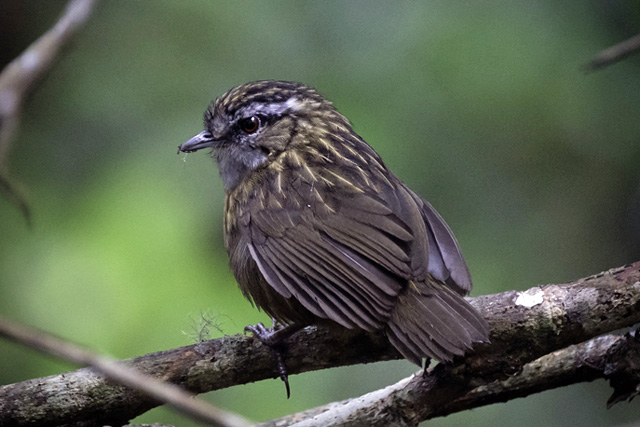
Mountain Wren-Babbler
On the Kinabatangan River, Sabah’s longest, we spent a few days exploring the river and its tributaries by boat. Here we found Scarlet-rumped Trogons, gem-like Blue-eared Kingfishers, brighter than bright Hooded Pittas, and confiding, not to mention spectacular, Crested Firebacks. On the more expansive parts of the river we saw flocks of gorgeous Blue-throated Bee-eater, many raptors including Grey-headed Fish-Eagle and Wallace’s Hawk-Eagle, the rare Storm’s Stork, and a remarkable six species of hornbill – Oriental Pied, Black, Bushy-crested, Wrinkled, the usually elusive White-crowned and Rhinoceros. Primates were a feature, too – Long-tailed Macaques patrol the river banks, while Red Leaf-Monkeys perch high in the trees and Proboscis Monkeys with their beautiful pelage and comical noses feed quietly.
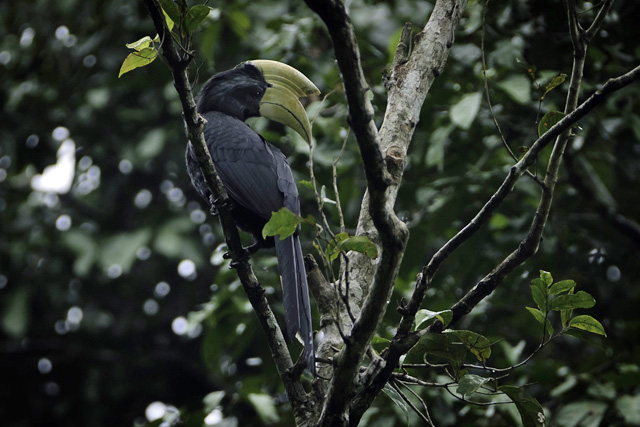
Black Hornbill
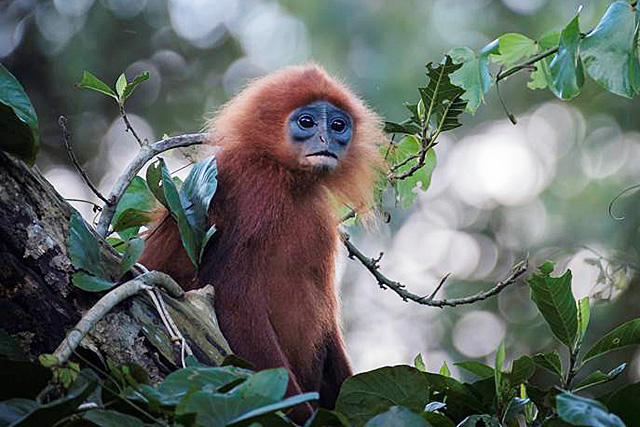
Red-leaf Monkey
The jewel in the crown of Borneo is Danum Valley. This large reserve is just overflowing with a mind-boggling array of plants and animals. Amongst the many highlights were a fantastic pair of Helmeted Hornbills (which along with sightings of Wreathed rounded out our list to include all the possible hornbills on Borneo), stunning Diard’s and Red-naped Trogons, a bevy of broadbills and a bagful of babblers as well as a number of neat woodpeckers, spiderhunters, and many less glamorous bulbuls. The bird that I am probably most often asked about when it comes to Borneo is the strange Bornean Bristlehead. Sightings of this super interesting bird are by no means a certainty so it was both a relief and a joy to find a small group of them high in the canopy.
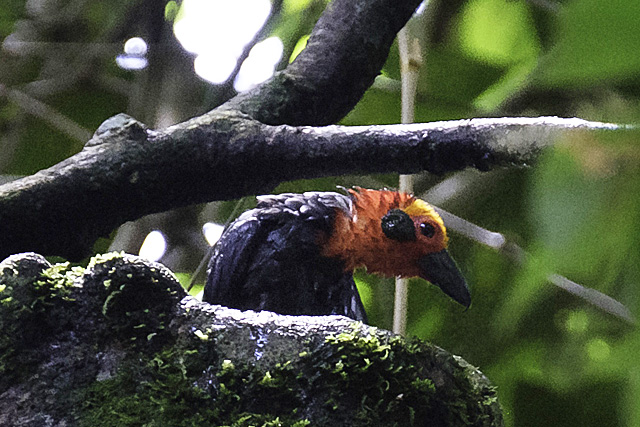
Bornean Bristlehead
October 18:
Jake Mohlmann on his recently completed tour, Arizona and Utah: Fall Migration in the Canyonlands
We just wrapped up another journey through the amazing Colorado Plateau. Many scenic wonderlands were explored including colorful Zion and Bryce Canyon National Parks, water etched Antelope and Salt River Canyons, and of course world-famous favorites Monument Valley and Grand Canyon.

Sunset view of Monument Valleys Mittens
We had some amazing views of raptors this year with several close encounters with Golden Eagles at eye-level, very good looks at four species of falcon including both Prairie and Peregrine, as well as a score of other hunters like Swainson’s, Sharp-shinned, and Zone-tailed Hawks.
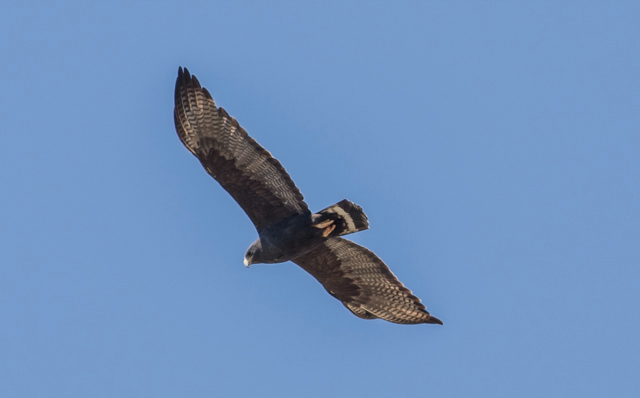
A Zone-tailed Hawk passes overhead
Every year we try hard to find the majestic California Condor and we were successful on two days; it was hard to decide whether the full grown adult soaring over the bright red Vermilion Cliffs or the full-sized chick at a cave entrance in Zion’s towering cliffs was the more exciting experience.
Not to be outdone by the larger birds the passerine show was also exciting. Warblers were in high demand and many of them showed up for the elated group. One specific migrant flock in the expansive pine forests of central Arizona contained Grace’s, Black-throated Gray, Townsend’s, and an amazing five Olive Warblers. Painted Redstarts definitely added a color flare to the flock and the diminutive Hutton’s Vireos sang repetitively. A pair of Hepatic Tanagers here stopped us in our tracks while we observed them feeding in an oak tree.
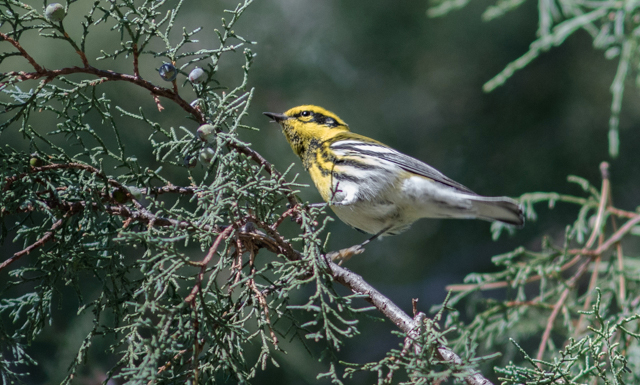
A Townsend’s Warbler searching for insects
Even a couple rarities stuck around for us to add them to the overall tour list including point-blank views of two different White-eyed Vireos and a young Tricolored Heron that decided to make Phoenix it’s winter home.
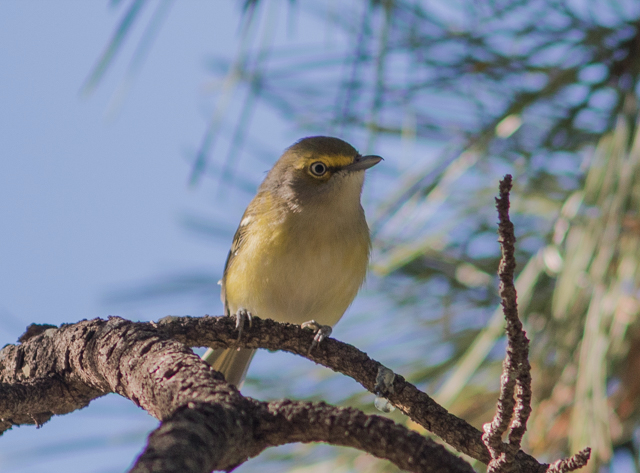
A very uncommon White-eyed Vireo
Everywhere we went we found flocks of birds. Whether it was dozens of Pinyon Jays soaring by in their raucous clouds, Yellow-headed Blackbirds swirling around the sky before plummeting into the marsh for the night, countless ducks like Ruddy, Cinnamon and Blue-winged Teal, or Western and Clark’s Grebes comparing facial patterns. Sentinel species often announced the presence of a tempting flock for us to invesigate. Anytime we heard Mountain Chickadees, Pygmy Nuthatches, or even Juniper Titmouse we knew there was excitement ahead.
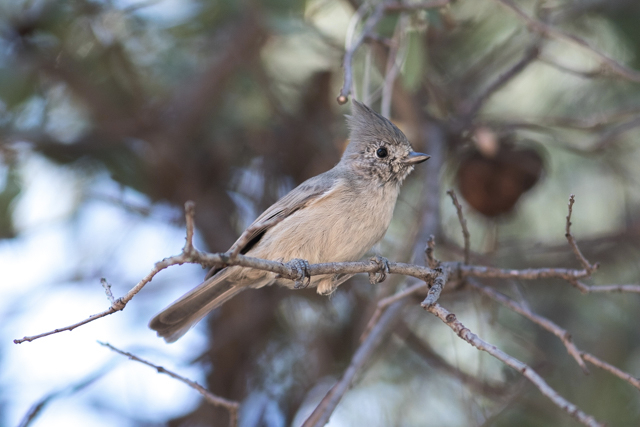
A Juniper Titmouse sounds the alarm
Mammals were also well represented with 19 species seen, with the major highlight when we approached a huge bull Elk downwind and managed to get within 50 meters before he noticed the onlookers.
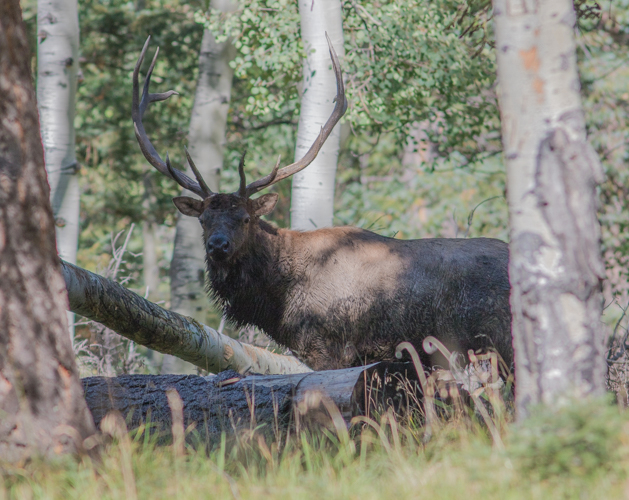
An enormous bull Elk, the mammal highlight of the tour!
Our group’s good sprits (and remarkable hiking ability) made this a particularly delighful tour. We covered an unusual amount of ground without rushing, finding as a consequence 202 species of birds, and all the while enjoying perfect weather.
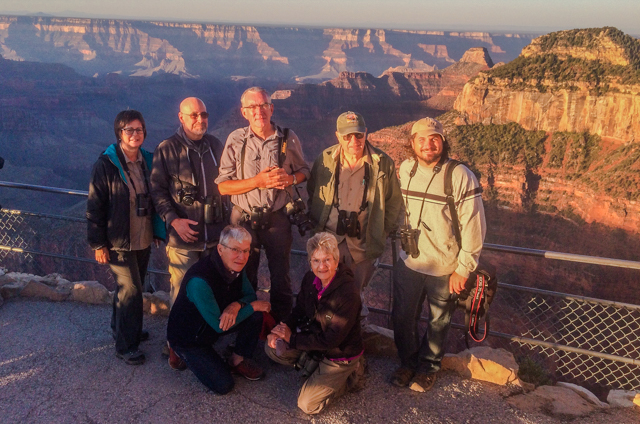
Our excellent group overlooking the Grand Canyon
October 11:
Susan Myers on the Rail-babbler Extension to her tour, Borneo.
An early start saw us on the road through the unusually quiet streets of Singapore as we made our way on a holiday weekend to the border with Malaysia, just a short bridge hop over the Johor Strait. The process of going through immigration at the border was painless but nevertheless a bit of an adventure in itself. We were happy not to be traveling the other direction as we could see thousands of Malaysians making their daily trip into Singapore for work! Hard to imagine what it must be like on a normal work day…
Accompanied by Con Foley, the man whose name is synonymous with the reserve, we headed straight to Panti, an ever diminishing patch of lowland rainforest that still protects Tiger, Elephant, White-handed Gibbons that serenaded us upon arrival and a multitude of birds including our quarry – the shy and elusive Rail-babbler, as well as a plethora of other fabulous forest creatures. We met with early success in our search with brief sightings of a furtive bird as it hopped over logs and scuttled through tiny, sunlit patches of forest. But it proved too speedy for some and we all hoped for better views, but we would have to be patient.
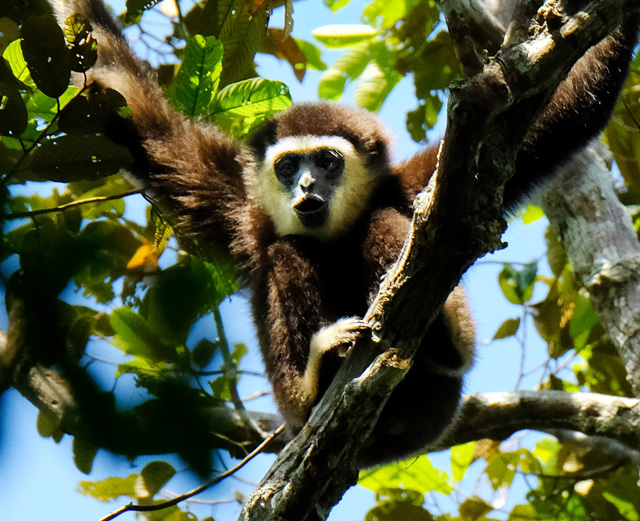
White-handed Gibbon
Over the next couple of days as we explored this rich area our persistence paid off with never a dull moment. It helps that everywhere one looks there is some new little discovery to be made. We found mysterious insects, stunning butterflies, bizarre plants and fungi, and some very fancy mammals all while amassing a terrific bird list. Our favourite mammal sightings were the charismatic gibbons and a terrific Leopard Cat that crossed our path in the daylight. Dana was even lucky enough to see a Small-clawed Otter. Panti is an exceptional place for those Asian favourites, the babblers and we did very well with them on this visit. Notably we connected with Black-throated Babbler, White-necked Babbler and a very special bird, the very rare Grey-breasted Babbler.
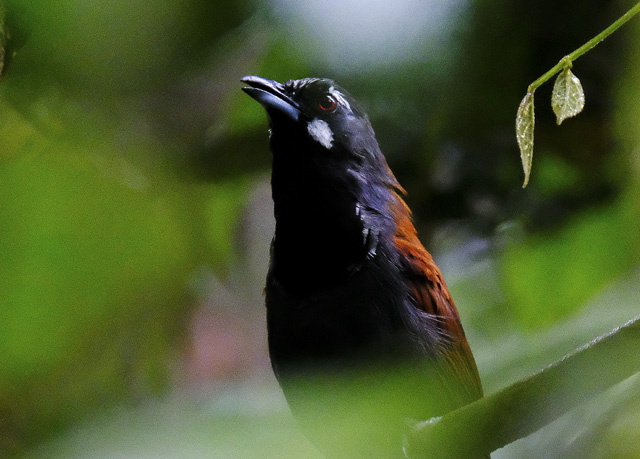
White-necked Babbler
But we still hoped for better looks at the incredible Rail-babbler, now the proud owner of its own family, the Eupetidae. As we birded we were constantly alert to its almost indiscernible high-pitched single note call. We heard it a few times but never quite close enough until late in the afternoon of our second day one called close by in the dense roadside vegetation. With just a little bit of encouragement a bird peaked out of the vegetation, then came right out in the open to forage. As we joyfully watched another one joined and we watched them rapturously before, incredibly, they both flew across the road. Our hopes for a BVD were more than fulfilled. In fact, I’m not sure it would be possible to have better views!
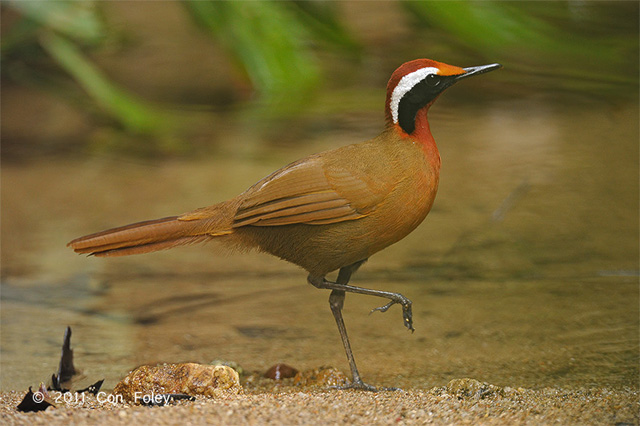
Rail-babbler
Note: The above image, courtesy of our co-leader, Con Foley, was not taken on our tour but our views were almost as good...
October 10:
Rich Hoyer on his recent completed tour, Oregon in Late Summer
Oregon proved itself to yet another very happy WINGS group as a place of great physical beauty and amazing natural variety. We started with a pelagic trip out of Newport where highlights were numbers of confiding Sabine’s Gulls and some close Black-footed Albatrosses, as well as sightings of a school of young Ocean Sunfish and a Blue Shark. Then in the Coast Range we spent time with the world’s most cooperative Northern Pygmy-Owl and caught up with a single Sooty Grouse on our second drive up and down Marys Peak. Shorebirds were scarce this year on the coast, but we did find Wandering Tattler, had close enounters with Wrentit, and had superb views of a close Gray Whale. The roost of over 1500 Vaux’s Swifts spiraling down a Corvallis chimney was an amazing and unforgettable sight. In the wide open steppes east of the Cascades, Prairie Falcons and a stunning Ferruginous Hawk were right at home, and the enchanting coniferous forests provided us with memorable sightings of Clark’s Nutcracker, Williamson’s Sapsucker, White-headed Woodpecker, and abundant Sage Thrashers. We went owling on four nights, seeing several species, but particularly memorable were a Common Poorwill in flight over our heads and an amazingly confiding Flammulated Owl, perched low in a pine tree only a few yards away.
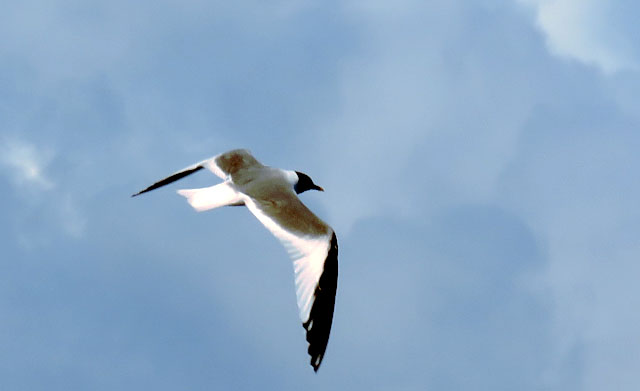
Sabine's Gull
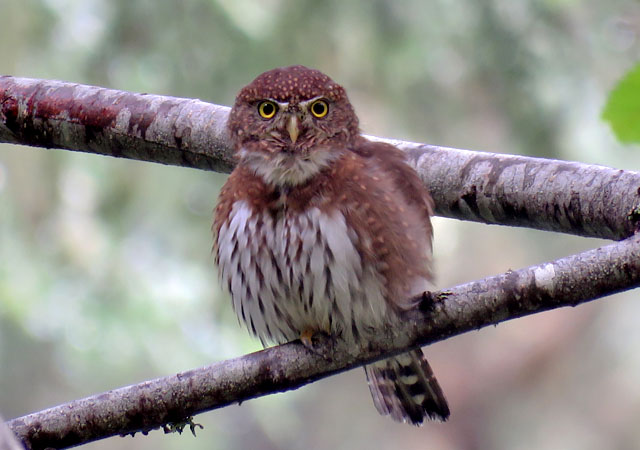
Northern Pygmy-Owl
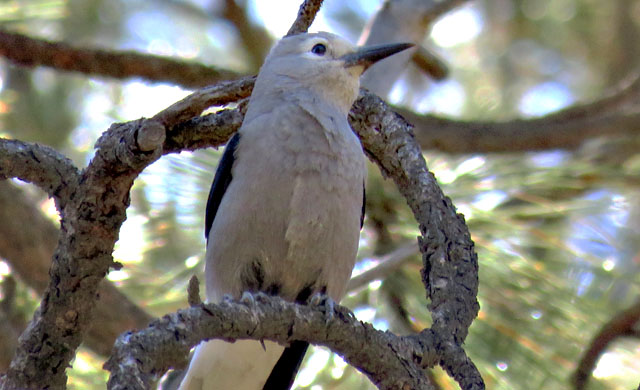
Clark's Nutcracker
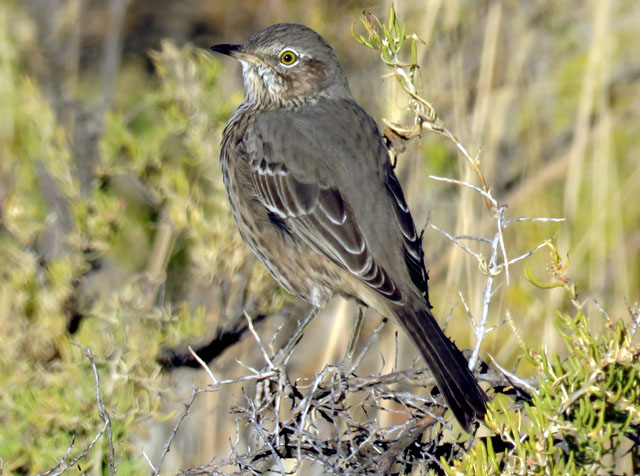
Sage Thrasher
October 9:
Steve Rooke on his just-completed tour, South Africa: The Kalahari to the Cape
Starting in the Kalahari Desert, the ‘sandgrouse show’ was as good as ever with large numbers of Burchell’s Sandgrouse joining the Namaqua Sandgrouse – a constant nervous coming and going, especially when a lone Lanner Falcon buzzed the place then sat in a nearby tree preening. We had some superb close encounters with Secretary Birds, which appear to be thriving in this Park, and a few Kori Bustards were also seen.

Burchell's and Namaqua Sandgrouse
Birding on the Orange River gave us African Fish Eagle, nesting South African Cliff Swallows, Pale-winged Starlings, Orange River White-eyes, and some Red-faced Mousebirds. The open countryside surrounding the remote town of Pofadder was where we got to grips with some of the region's larks. The sought-after Sclater’s Lark performed beautifully with a pair performing some courtship display. Along with more Fawn-coloured and Sabota Larks we also found Spike-heeled, Karoo Long-billed, and Large-billed Larks, before spending some time with the fabled Red Lark which eventually showed really well. Several Karoo Korhaan’s were some distraction from all the larks!

Red Lark
The coastal fynbos at Lambert's Bay gave us displaying Cape Clapper Larks, along with many other typical fynbos birds such as Cape Francolin, Bokmakarie, Karoo Scrub Robin, Grey-backed Cisticola, Karoo Prinia, and Southern Double-collared Sunbirds, to be followed by the spectacle of Bird Island and the nesting Cape Gannets. Heading south from here we found a variety of birds from the mighty Goliath Heron to Black Harrier, Chestnut-banded Plovers, and Maccoa Ducks.
Out in the vast open space of the Karoo we were treated to fantastic views of Cinnamon-breasted Warbler with a pair feeding well-grown young, and other birds here included a majestic Verreaux's Eagle, Karoo Eremomela, Namaqa Warbler, Fairy Flycatcher, Pririt Batis, Rufous-eared Warbler, Red-capped and Karoo Larks, and Tractrac Chats. A wander around Bontebok National Park gave us some good views of the eponymous antelope, as well as several Stanley's Bustards (including one in full display just after leaving the reserve), Brown-hooded Kingfisher, Pearl-breasted Swallow, Cape Longclaw, Cape Grassbird, Cape Batis, African Stonechat, Greater Double-collared Sunbird, lots of Fiscal Flycatchers, and Southern Boubou.

Bontebok

Displaying Stanley's Bustard
The drive south from there took us through acres of large open fields, some of which were favored by flocks of Blue Cranes and we had totalled an incredible 159 by the end of the day...and the spring flowers while average for the region were eye-popping for anyone not previously exposed.

Blue Cranes

Spring flowers
We ended with four days in and around Cape Town. Our pelagic took us some 30 miles past Cape Point in search of seabirds - and we were not to be disappointed as we joined literally thousands of seabirds behind a trawler as it pulled in its nets. Shy and Black-browed Albatrosses were there in profusion, and we had good views of up to 3 Indian Yellow-nosed Albatrosses. These were in amongst thousands of White-chinned Petrels, and Cape Gannets, with lesser numbers of Pintado Petrels, Subantartic Skuas, Great and Sooty Shearwaters, and a lone Wilson's Storm Petrel joining the throng. There were also lots of Cape Fur Seals and one pod of up to 100 Common Dolphins.

Shy Albatross and White-chinned Petrel
We then spent a few days exploring the Cape. We watched Water Thick-knees and Cape Rock Thrush at Klienmond, African Penguins and Bank Cormorants at Stony Point, Cape Rockjumpers jumping around the rocks at Roiels, and Cape Siskins feeding on the ground at Harold Porter Gardens. We braved the rain to tour Strandfontein Sewage Farm and were treated to hundreds of bright pink Greater Flamingos, flocks of Southern Pochard, Cape Teal, Cape Shovelers, and a pair of Hottentot Teal.

Greater Flamingos
Our final morning was spent amidst the splendor of Kirstenbosch Botanical Gardens where, as well as a profusion of flowers, we had wonderfully close views of Cape Sugarbirds, Orange-breasted Sunbirds, Forest Canary, Cape Batis, and Sombre Greenbul. Overhead there was Forest Buzzard and Black Sparrowhawk and the weather improved to make this last morning a fitting end to the tour.

Cape Sugarbird
October 5:
Fabrice Schmitt on the first known photographs of the Colombian Speckled Tree-rat taken on the 2015 Colombia: The Santa Marta Mountains tour
The Santa Marta tour is obviously a fantastic tour for birding, but like any trip in the tropics, one encounters other wonderful wildlife: amazing butterflies, riveting reptiles and great mammals such as Cotton-top Tamarin or Colombian Red Howler.
Cotton-top Tamarin
During our 2015 tour we stopped at Isla Salamanca National Park, and when the local rangers realized we were interested in all living creatures, they found for us a pair of rodents. We had great views of these two little mammals, standing in a tree only 2 meters overhead. Thanks to the fantastic Louise Emmons book ‘Neotropical Rainforest Mammals’, they were rapidly identified as Colombian Speckled Tree-rat.
Colombian Speckled Tree-rat
Back home, I posted a few pictures on my Flickr account, between pictures of Black-cheeked Mountain-tanager, Russet-throated Puffbird, Golden-breasted Fruiteater and many more birds seen during that tour.
Black-cheeked Mountain-tanager
Russet-throated Puffbird
Golden-breasted Fuiteater
That was supposed to be the end of the story, but luckily, Louise Emmons saw these pictures and advised me that they are probably the only pictures of living Colombian Speckled Tree-rat! Actually, it is a rare mammals in collections too; only 10 specimens exist in museums!
What a surprise: the ‘drab long-tailed arboreal rat’ suddenly became the ‘first photograph ever of a Colombian Speckled Tree-rat’!
I doubt our rat encounter will make many people jealous, but the story illustrate how little we know about the wildlife in South America. Any trip in the Neotropics can bring a few discoveries, and that is one of the reasons I love so much coming here! I cannot wait to return.
September 12:
Gavin Bieber on his just-completed tour, Alaska: The Pribilofs in Fall.
The fall tour to the Pribilofs took place during a week of warm and sunny weather.
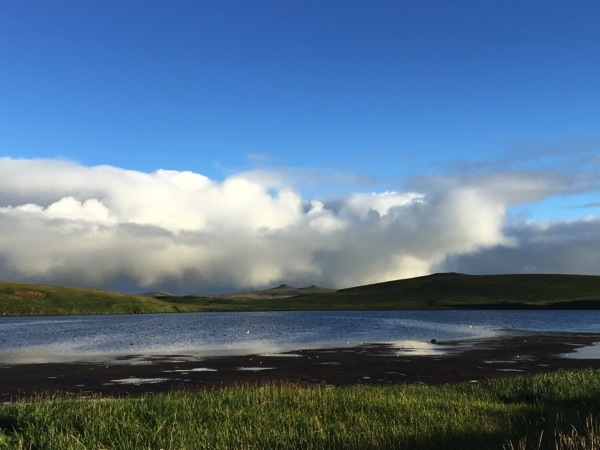
A warm and sunny Pribilofs
Among seven species of Asian shorebirds were hordes of attractive juvenile Sharp-tailed Sandpipers and one lingering Marsh Sandpiper.
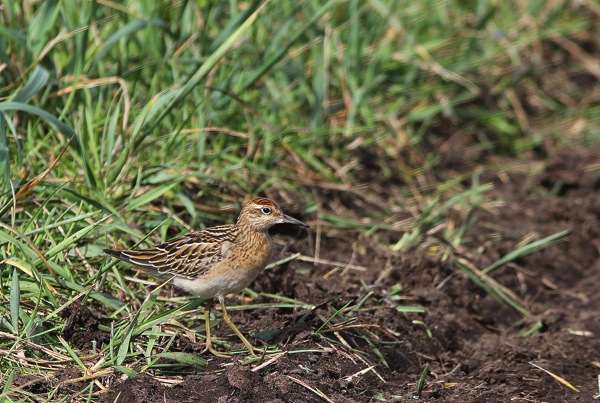
A handsome juvenile Sharp-tailed Sandpiper
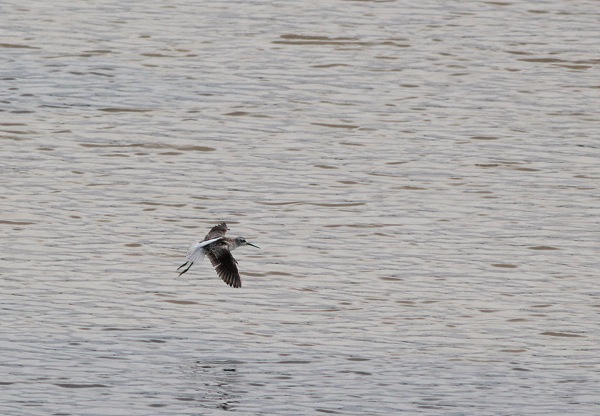
The lingering Marsh Sandpiper
The Salt Lagoon hosted hundreds of shorebirds, including migrant groups of Pacific Golden-Plovers, and two Red-necked Stints. Flocks of Long-billed Dowitchers and Red Phalaropes popped up on the islands in many lakes. Our highlight passerine was undoubtedly a Pechora Pipit that we found as it walked along a muddy pond edge. Lapland Longspurs were beginning to flock up in preparation for their departure in late September, and often offered us excellent studies of their surprisingly intricate plumage.
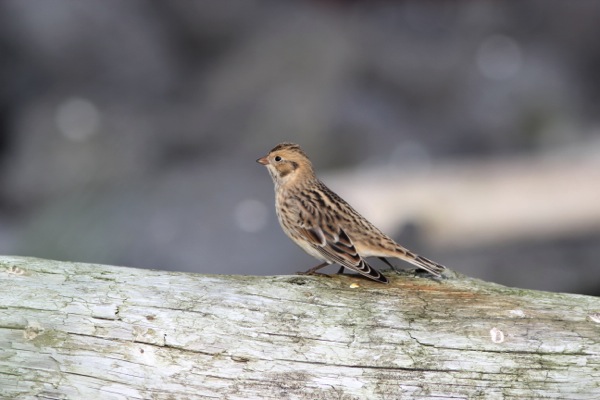
Lapland Longspurs in a wide assortment of plumages were everywhere
Repeated checks of the Crab Pots eventually revealed a perky Boreal Owl that remained for our full stay, likely eating Snow Buntings and Gray-crowned Rosy-Finches in the nearby Quarry.
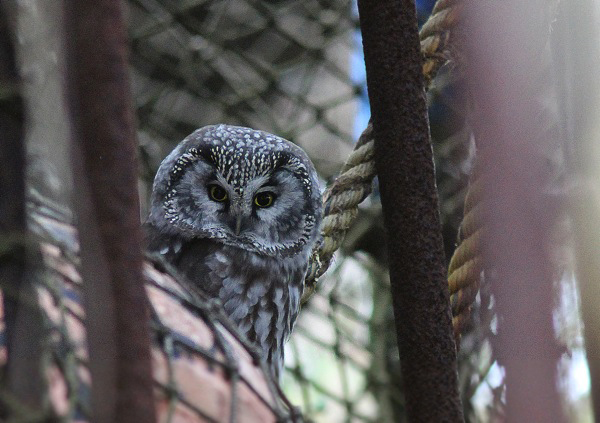
Needless to say, we didn't expect a Boreal Owl in a crab trap
The sunrises over the tundra here were often spectacular, with golden light setting the grass heads alight. All in all a great week in the Bering Sea!
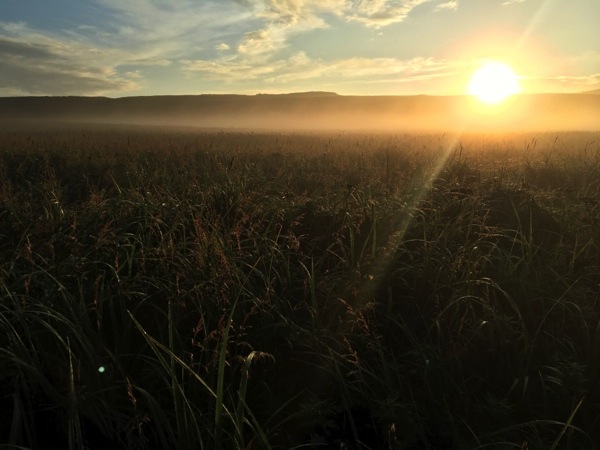
A Pribilofs Sunrise
August 30:
Jon Dunn on his recently concluded tour, Arizona: Second Spring
The summer monsoon rains arrived in earnest during our tour; the creeks and rivers filled from the Santa Cruz in the west to Cave Creek in the east, and almost immediately everything greened up. Happily, and despite the downpours all around, our time in the field wasn’t for the most part compromised.
The afternoon light on Montana Peak in the Pajarito Mountains against the backdrop of a distant thunderstorm
There was much birdsong in the lowlands, particularly from the sparrows with Botteri’s, Cassin’s, Rufous-winged and Five-striped all in song. There were many early August migrants too with Lark Sparrows seemingly everywhere, often in large flocks and even from small mountain clearings. Other migrants included single Dusky and Willow Flycatchers, Lazuli Bunting, Chipping Sparrows and small numbers of Hermit Warblers.
We found nearly all of the expected species that occur in southeast Arizona at this time of the year including all of the southwest warblers like Red-faced, Virginia’s, Olive (now in its own family), Lucy’s, and Grace’s, Bendire’s and Crissal (scope views) Thrashers, six species of owls, including roosting Spotted and daytime views of a roosting Whiskered-Screech (in addition Elf Owl was heard), five species of nightjars, including perched visuals with the help of a light of Buff-collared Nightjar, a flock of four Elegant Trogons in the Huachucas, and roadside encounters with three separate pairs of Montezuma Quail.
A curious male Montezuma Quail
Various rarities were present this summer, many of which we managed to locate including a Plain-capped Starthroat, a Tufted Flycatcher (had nested in upper Ramsey Canyon earlier this summer), Black-capped Gnatcatcher, Rufous-capped Warbler, and an adult male Flame-colored Tanager. An adult Common Black Hawk in California Gulch was out of place; to my knowledge they aren’t known in summer from this part of southeastern Arizona.
Plain-capped Starthroat makes a visit to a Madera Canyon feeder.
Hummingbirds of eleven species were recorded; they were particularly numerous in the Chiricahua Mountains where at one set of feeders we estimated some dozen southbound Calliopes, many of which were adult males. A female Lucifer Hummingbird was seen here too although we had seen an adult male Lucifer previously at Mary Jo’s feeders in Ash Canyon (Huachucas). Blue-throated Hummingbirds were numerous in the Chiricahuas, especially at the feeders of the Southwest Research Station, but we saw none elsewhere.
Non avian highlights included both Greater Short-horned and Regal Horned Lizards, a Black-tailed Rattlesnake a rare Green Ratsnake in Madera Canyon, and the aways memorable Antlope Jackrabbit.
The remarkable Antelope Jackrabbit
August 24:
Fabrice Schmitt from his recently concluded tour, Colombia
Another fantastic tour to Colombia!
The group at Nevado del Ruiz
Visiting the three cordilleras, crossing both the Magdalena and Cauca valleys, birding from sea level to 15,000 feet elevation, and even adding a few days in the isolated Santa Marta Mountains and Guajira Peninsula, we had an amazing overview of the Colombian avifauna!
Black-billed Mountain-toucan
The recently discovered Chestnut-capped Piha
It was hard to pick the best birds of the trip amongst hundreds of wonderful species, but here are some of the best as voted by the group: Hooded and Ochre-breasted Antpitta (two little ones who gave us amazing views), a male Santa Marta Woodstar displaying and showing well his pink-purple gorget, the most wanted Northern Screamer, a stunning Santa Marta Antpitta giving a wonderful show after we hid in the bamboo, and the superb Crested Ant-tanager.
Ochre-breasted Antpitta
The elusive Santa Marta Antpitta
We visited more than 10 different hummingbirds feeding stations and saw more than 60 species of these fascinating birds! We even hand feed Rainbow-bearded Thornbill and Golden-breasted Puffleg!
Rainbow-bearded Thornbill
Obviously, beside the incredible birds, we were amazed by the variety of flowers, orchids, grasshoppers, butterflies, moths, etc.
Opaon varicolor, endemic to the Choco
Colombia is definitely the country of biodiversity.







